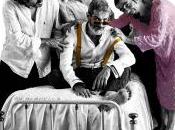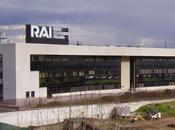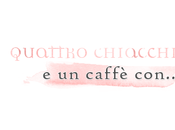Dobbiamo ancora imparare ad essere contemporanei della modernità? Sembrerebbe di sì. Ci troviamo di fronte ad una scrittura fotografica che traduce il mondo in foresta di simboli, che attraversa la sovversione delle forme, che evoca costantemente il conflitto fra astratto e concreto, fra luce e materia. Sovrapposizioni di oggetti eterogenei, illusione e sorpresa come parte essenziale dell'improbabile, continui smarrimenti. E ancora, quello che appare vero potrebbe essere tale ... ma la realtà così come è non sembra essere possibile! Allora dell'apperceziòne non rimane che straniamento, vertigine percettiva. Scrive, Raoul Hausmann, in una forma solo apparentemente criptica, la migliore definizione di immagine fotografica che sia stata data a parere di chi scrive, nel Novecento: [...] la Luce e l'Ombra. La Luce produce Ombra. Contrasto supplementare. La Luce piena rende invisibile. Scrivere con la Luce? La Luce brucia lo strato sensibile, è il Buio. Stampando su carta ne rovesciamo l'effetto. Contraddizione concordante. Non facciamo altro che rendere l'immagine Buia [...] La melanografia, ( n.d.a. positivo diretto al collodio su carta nera detta anche atrografia, inventata da Giles Langdell nel 1953) le Ombre non ci dicono il significato, esse rendono l'immagine di una Cosa, che non resta Cosa, che evoca altro dalla Cosa. [...] È la disintegrazione causata dalla Luce, che parla con le Ombre, che modifica la Cosa in una immagine de-significativa.
Proiezioni, riduzioni, inversioni tonali, luce-buio, tecnica dello stukage (1937) cottura della pellicola e proiezione della pellicola spenta, fusione di negativi, ingrandimenti di particolari astratti, dematerializzazioni, trasformazioni morfologiche; ecco il dispositivo fotografico del Novecento, che si propone come un demiurgo in un laboratorio alchemico, che crea e manipola incessantemente il reale. La forma visiva, l'estetica della sperimentazione trasformano l'immagine in "estasi dell'immagine", in quello che Louis Aragon chiamava la " stupefacente immagine" lontana dalla realtà quanto dal sogno e portatrice di " bellezza convulsiva " come direbbe André Breton. Il super-reale, non è fuori dal reale, ma all'interno della realtà stessa. La bellezza della materia è ora disvelata.
Wilhelm Worringer nel 1908 in "Abstraktion und Einfühlung: e in Beitrag zur Stilpsychologie" - Astrazione e empatia. Un contributo alla psicologia dello stile - ci dice che l'impulso all'astrazione deriva dalla volontà di isolare il singolo oggetto accostandolo a forme astratte trovando in questo modo un punto di quiete, un rifugio dalla caoticità del mondo, dando forma così al volere artistico assoluto o latente esigenza interiore che è il momento primitivo di volontà di forma e creazione ( Wollen).

Secondo Wilhelm Worringer lo stato d'animo generale dell'uomo mitteleuropeo e nordico è uno stato d'ansia metafisica, e la sola risorsa è quella di intensificare la propria irrequietudine sino ad un parossismo che gli porti stupore e finalmente liberazione. Tutto il Novecento è caratterizzato da un alternarsi di empatia, con avvicinamento al reale e coinvolgimento emotivo mediante sovrascrittura simbolica e astrazione, cioè il rifiuto della realtà con una forte attenzione e riflessione circa la specificità della ricerca formale e della percezione visiva.
Il Novecento, osserva Georg Simmel, è modernità, e la modernità è essenzialmente crisi permanente, perché il mutamento in se stesso è il suo principio. Esso è flusso e instabilità in ogni forma, epoca del fortuito, del volatile e del transitorio, epoca che tende a fuggire ogni forma.
La fotografia è uno stato dell'essere, è scoperta di sé, è emersione del subcosciente e occulto, rottura di momenti apparentemente impenetrabili. Più vicina al sogno dunque, dove vita e morte si intrecciano e coesistono costantemente. Uno sguardo interiore, un attraversamento nell'invisibile, nell'impensabile e nell'indicibile.
Sguardi che squarciano il mondo in cui l'invisibile si fa sempre più presente e visibile, tanto da diventare irreale. Immagini inquietanti.
Un mondo denso e intenso quello della fotografia ceca, poco noto in Italia prigioniera di una tradizione fortemente votata al figurativismo e troppo spesso soggiacente in modo acritico alle lusinghe di un mercato che premia e incoraggia l'emersione di "stelline" che faticano a brillare un sol giorno. Qualcuno ha affermato che "quando il sole della cultura è basso all'orizzonte, anche i nani proiettano lunghe ombre."
Questa mostra che intende colmare questo grave ritardo storico e culturale, tenta di indagare le forme dell'esperienza moderna muovendosi quindi, nell'alveo di un'idea di alterità curatoriale.
Czech Fundamental nasce dalla collaborazione tra il Centro Sperimentale di Fotografia adams di Roma, Gunther Dietrich Direttore di Edition Photo Berlin, Nadia Rovderova Direttore di Artinbox di Praga, Suzanne Pastor fondatrice e Direttore del Prague House of Photography (ora GHMP).
La mostra presente racconta che l'arte è astrazione, che il Novecento e con esso le grandi inquietudini non è terminato, che la sfida e la spinta propulsiva che ha espresso devono tornare ad abitare le nostre esistenze. I conflitti non sono esauriti come qualche pessima narrazione corrente ci vuole far credere. L'uomo deve continuare a scrivere la propria storia ed oggi come non mai si necessita di utopia, di Novecento, di modernità, di coraggio.
Gabriele AgostiniPresidente Centro Sperimentale di Fotografia adams
The inner need to subvert realityDo we still have to learn how to be abreast of modernity?
It seems that we do. We're standing in front of a photographic composition, that translates the world into a forest of symbols, passing through the subversion of shapes, that constantly remember the conflict between abstract and concrete, between light a

Projections, reductions, tonal inversions, light-dark, the technique of stukage (1937), camera film burning and the projection of the extinguished film, the fusion of negatives, the enlargement of abstract details, dematerializations, morphological transformations; this is the photographic combination of the Twentieth Century that, as a demiurge in an alchemic laboratory, creates and constantly manipulates reality. The visual form, the aesthetic of experimentation transforms the image in an "ecstasy of image," what Louis Aragon called "the amazing image," as distant from reality as from the dream and bearer of "convulsive beauty," as André Breton would say. The super-real isn't outside reality, but inside reality itself. The beauty of material is now revealed.
In 1908, Whilhelm Worringer in "Abstraktion und Einfühlung - Ein Beitrag zur Stilpsychologie" - "Abstraction and Empathy - a contribution to the psychology of style", said that the impulse for abstraction is the will of isolating a single object, putting it together with abstract forms and finding a point of quiet, away from chaos, so that the artistic will or the inner need, which is the primordial moment of creation, can come out. (Wollen needs source)
According to Worringer, the Nordic and Central European man is in a metaphysic state of anxiety and the only resource is to push him it until a paroxysm occurs, that leads to astonishment and finally, freedom. The Twentieth Century is an alternation of empathy, getting close to reality and emotional involvement through symbolic overwriting and abstraction, which means the rejection of reality with a strong attention and reflection towards formal research and visual perception. The Twentieth Century, observes Georg Simmel, is modernity, and modernity is basically in permanent crisis, because change itself is its own principle. This century is flow and instability in every form, is the époque of the fortuitous, of the elusive and the transient. It's an époque that escapes away from all form.
Photography is a state of mind, it is self-discovery, the emergence of the subconscious and the occult, the breaking of moments that are impenetrable at first glance. It is close to the dream where life and death are linked together and constantly co-exist. It's an inner sight, through the invisible, the unthinkable and inexpressible. A look that breaks through a world where the invisible becomes more and more visible, until it reaches the point of unreality. Disturbing images.
It is a dense and intense world, the world of Czech photography, little known in Italy, a country still the prisoner of a figurative tradition and victim of a market that encourages and rewards little stars that barely can shine for a day. It has been said that when the sun of culture is low over the horizon, even a dwarf can cast a long shadow. The intent of this exhibition is to fill this great historical delay, trying to investigate the form of modern experience through historical vision, in opposition to the current trend of today's exhibitions.
Czech Fundamental is the result of a partnership between "Centro Sperimentale di Fotografia adams" of Rome, Gunther Dietrich, Director of Edition Photo Berlin, Nadia Rovderova, Director of Artinbox, Prague, and Suzanne Pastor, co-founder and first Director of Prague House of Photography (now GHMP). The exhibition tells us that art is abstraction, that the Twentieth Century with all its apprehensions isn't finished, that we need to bring back to our existence the challenge and the motivations expressed during this period. The conflicts are not over, as one may want to make us believe. Man must continue writing his own history and today, more than ever, we need utopia, we need the Twentieth Century, modernity and courage.
Gabriele AgostiniPresident of Centro Sperimentale di Fotografia adams




